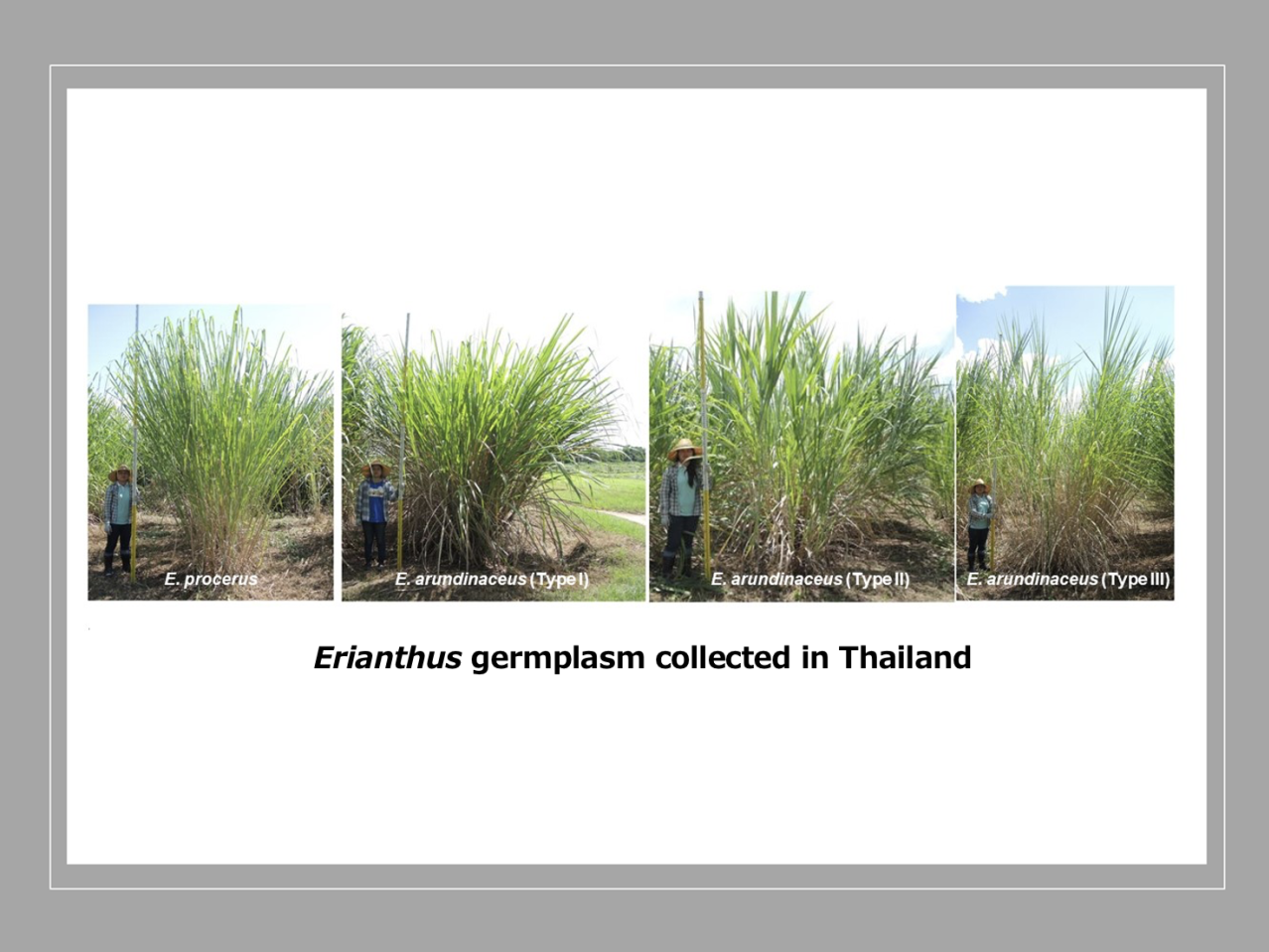Pick Up
750. JIRCAS-Erianthus Database of Native Erianthus Germplasm in Thailand Now Available

750. JIRCAS-Erianthus Database of Native Erianthus Germplasm in Thailand Now Available
Erianthus is a tall perennial herb of the Gramineae family. It has C4 photosynthesis* and is closely related to sugarcane (Saccharum spp. L.). Erianthus has high biomass productivity and excellent adaptability to adverse environments; hence, Erianthus has attracted attention and is increasingly used as an important source of genetic resources in sugarcane breeding. In addition, because of its high biomass productivity, Erianthus has come into focus as an energy or fiber crop to produce electricity, biofuels, pulp, etc. (Technology Catalog Contributing to Production Potential and Sustainability in the Asia-Monsoon Region Ver.1.0, p.21). However, public information on its characteristics was limited worldwide, and very few genetic resources were in use.
JIRCAS and the Khon Kaen Field Crops Research Center in Thailand have jointly collected Erianthus germplasm from all over Thailand and have implemented the sugarcane breeding project to realize the effective use of Erianthus germplasm for sugarcane breeding and as a biomass crop.
The JIRCAS-Erianthus Database on morphological and agronomic characteristics of native Erianthus germplasm in Thailand has been released. This database is expected to promote the use of Erianthus in sugarcane breeding, research, and biomass utilization in Thailand and other countries.
JIRCAS-Erianthus Database
https://www.jircas.go.jp/ja/database/erianthus
* C4 Photosynthesis (Wikipedia):
C4 photosynthesis is a form of photosynthesis in which plants have a C4 pathway for CO2 enrichment in addition to the Calvin cycle, which is the general CO2 reduction circuit during photosynthesis. In contrast, plants with only the Calvin cycle are called C3 plants. C3 plants have difficulty collecting CO2 under conditions that tend to close their stomata, such as high temperatures and drought, while C4 plants are able to avoid such conditions, open their stomata, and fix CO2. This is thought to be a physiological adaptation for plants to cope with harsh climatic conditions such as high temperatures, aridity, low CO2, and poor nitrogen soils. In environments where there are no adverse conditions, such as drought, and where there is no particular advantage to keeping the stomata closed, extra energy is required compared to C3 plants for CO2 fixation. Thus, while it is not well suited for such environments, it is a desirable property for dry grasslands and as a field crop. Corn and cereals are C4 plants, while major crops such as rice and wheat are C3 plants. On the other hand, weeds that cause severe damage to agriculture in the tropics include C4 plants that are better adapted to their environment than crops.
Contributor: TERAJIMA Yoshifumi (TARF)
